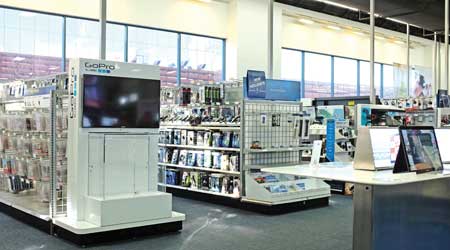Smart Building Use Case: Retail Facilities
Smart building technology has many benefits for retail. Here's a use case illustrating these benefits for a typical dry-retail store.
Here’s a use case demonstrating the benefits of smart-building technology for a typical dry-retail store.
To track more assets: Install an indoor positioning system to track guests based on the store’s smartphone application for registered users. Add asset trackers to certain store products and store equipment.
Monitor more assets: Monitor the indoor position of store guests, store products, and store equipment via the indoor positioning system.
Integrate more systems and data: Use software to integrate the indoor positioning sensors, lighting system, IT network(s), store smartphone application, and security system to allow the store to realize the full downstream benefits of data aggregation.
Control assets tighter and with more efficiency: Control lighting and HVAC systems by a combination of occupancy sensors, the indoor positioning system, and a scheduling application to minimize use while maximizing guest experience.
Drill down from big picture to detailed data: Generate heat maps to indicate areas of heaviest foot traffic and dwell times in the stores. This provides management the data to determine the best display case location, to identify guest navigation patterns, and to provide further insights on purchasing decisions.
Find important information quickly: Store and district managers can now find information and correlations between occupant shopping habits, store navigation, purchase decisions, environmental controls, and theft all in a single location.
Troubleshoot events with greater speed and accuracy: Determine if low lighting has an impact on theft ratios in certain portions of the store.
Comparative and predictive analysis for better decision making: Measure targeted advertising with respect to indoor position and hit ratios. Predetermine the likelihood of sales success of a product based on display position in the store. Experiment across several stores with various strategies of lighting, display setups, and product positioning (just to name a few) to determine the optimal sales strategies for the best same-stores-sales metrics.
Related Topics:











